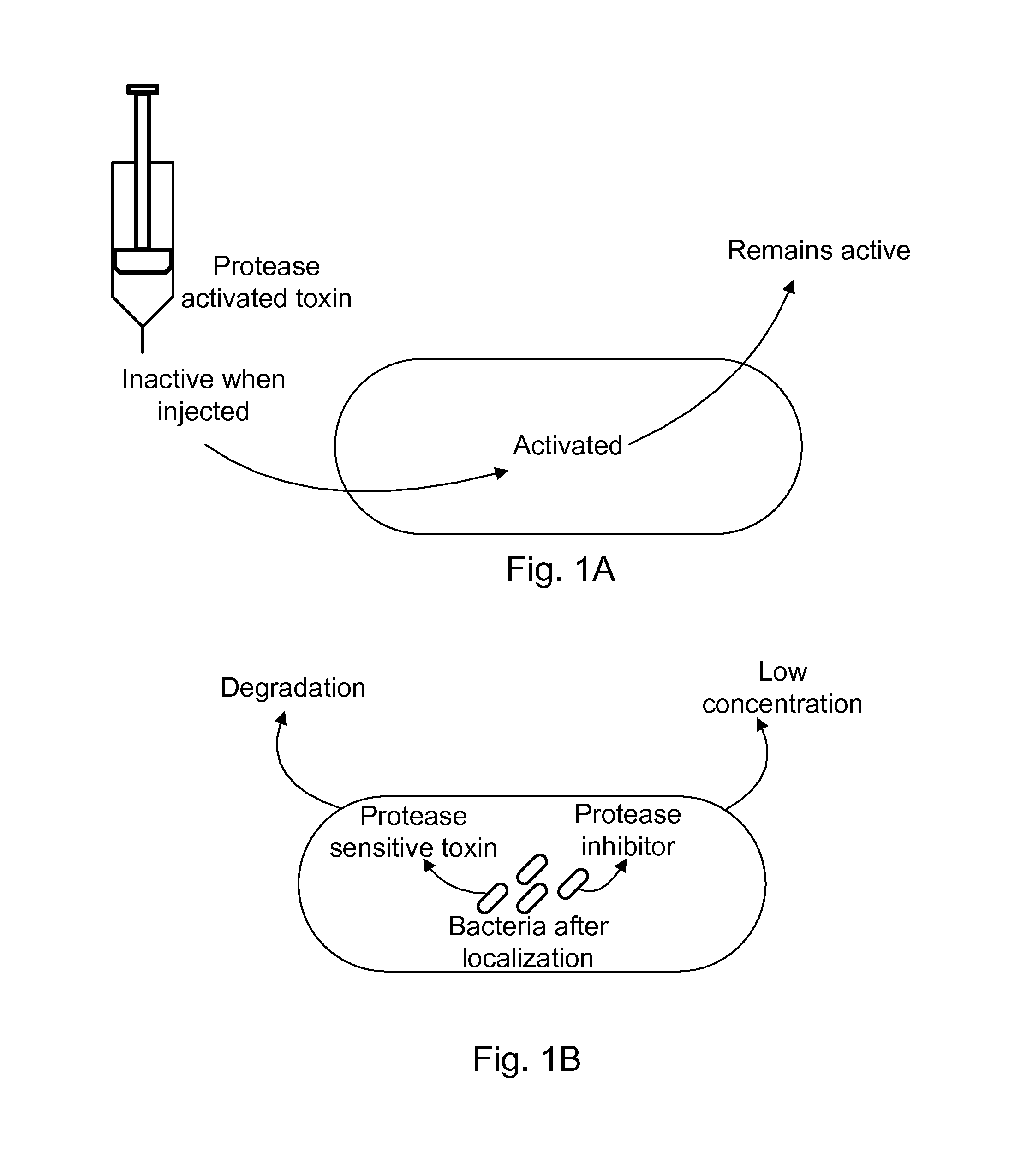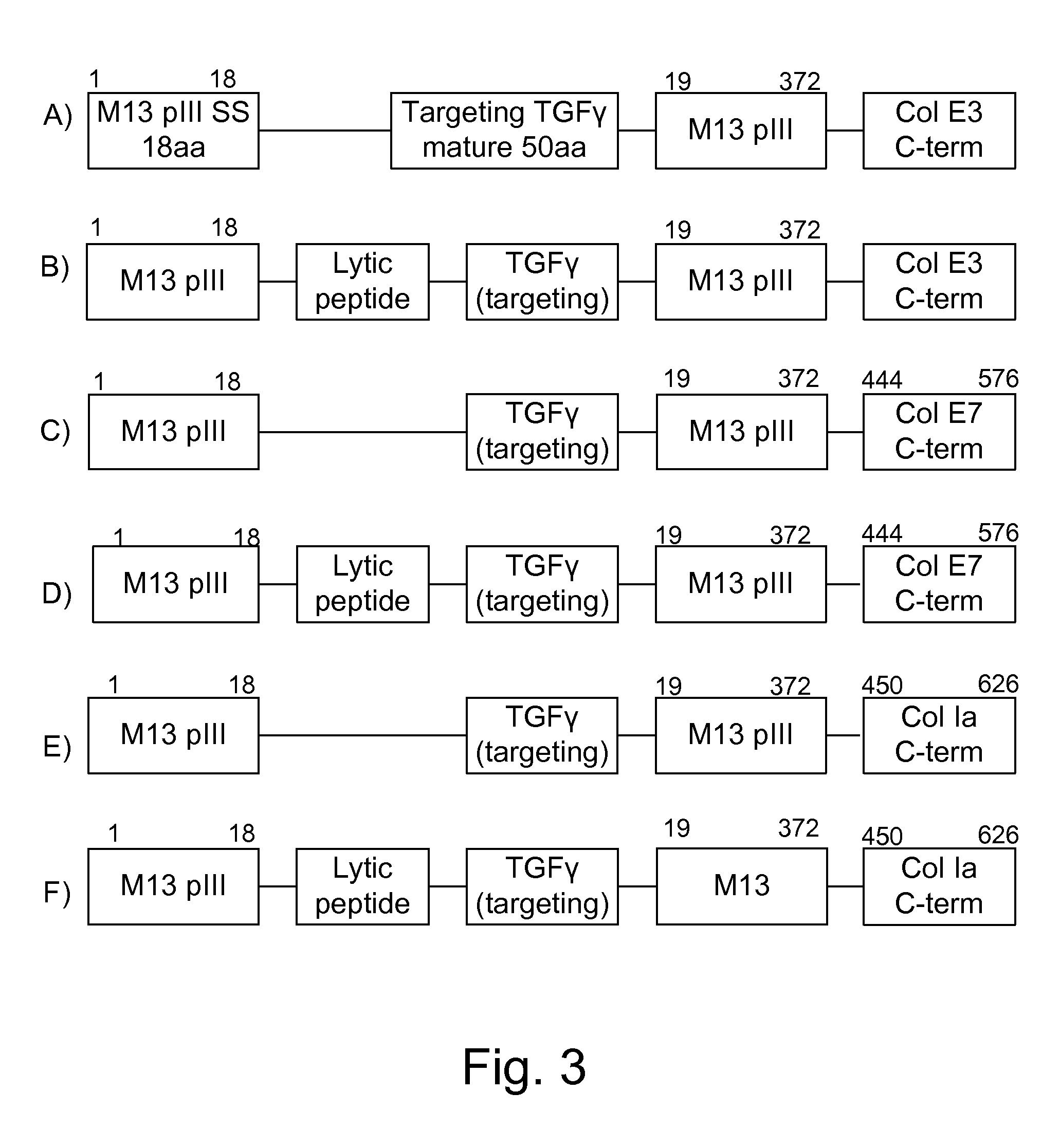Protease inhibitor: protease sensitivity expression system composition and methods improving the therapeutic activity and specificity of proteins delivered by bacteria
a protease sensitivity and expression system technology, applied in the direction of peptide/protein ingredients, fusions for specific cell targeting, peptide sources, etc., can solve the problems of antibody links to proteinaceous toxins that have limited clinical success, dose-limiting toxicity, and off-target toxicity, so as to achieve direct inhibitory or cytotoxic anti-neoplastic activity
- Summary
- Abstract
- Description
- Claims
- Application Information
AI Technical Summary
Benefits of technology
Problems solved by technology
Method used
Image
Examples
example 6
8.9 Example 6
Expression of a C-Terminal Amidating Enzyme Required to Post-Translationally Modify Gastrin and Bombisin Targeting Peptides
[0176]A C-terminal amidating enzyme composition known form serum or plasma which comprises a C-terminal amidating enzyme capable of amidating a C-terminal glycine which amidates the carboxy terminus of the C-terminal glycine of a peptide terminating in Gly-Gly. The enzyme participating in such amidation is called peptidylglycine-α-amidating monoxygenase (C-terminal amidating enzyme) (EC.1.14.17.3) (Bradbury et al, Nature, 298, 686, 1982: Glembotski et al, J. Biol, Chem., 259, 6385, 1984; and U.S. Pat. No. 5,354,675, expressly incorporated herein by reference), is considered to catalyze the following reaction:
—CHCONHCH2COOH—CHCONH2+glyoxylic acid
[0177]is produced by the recombinant.
8.10 Example
Expression of Antitumor Lytic Peptides
[0178]Examples of antitumor lytic peptides are shown in FIG. 5. It is understood that those peptides utilizing the hlyA s...
PUM
| Property | Measurement | Unit |
|---|---|---|
| Volume | aaaaa | aaaaa |
| Volume | aaaaa | aaaaa |
| Volume | aaaaa | aaaaa |
Abstract
Description
Claims
Application Information
 Login to View More
Login to View More - R&D
- Intellectual Property
- Life Sciences
- Materials
- Tech Scout
- Unparalleled Data Quality
- Higher Quality Content
- 60% Fewer Hallucinations
Browse by: Latest US Patents, China's latest patents, Technical Efficacy Thesaurus, Application Domain, Technology Topic, Popular Technical Reports.
© 2025 PatSnap. All rights reserved.Legal|Privacy policy|Modern Slavery Act Transparency Statement|Sitemap|About US| Contact US: help@patsnap.com



